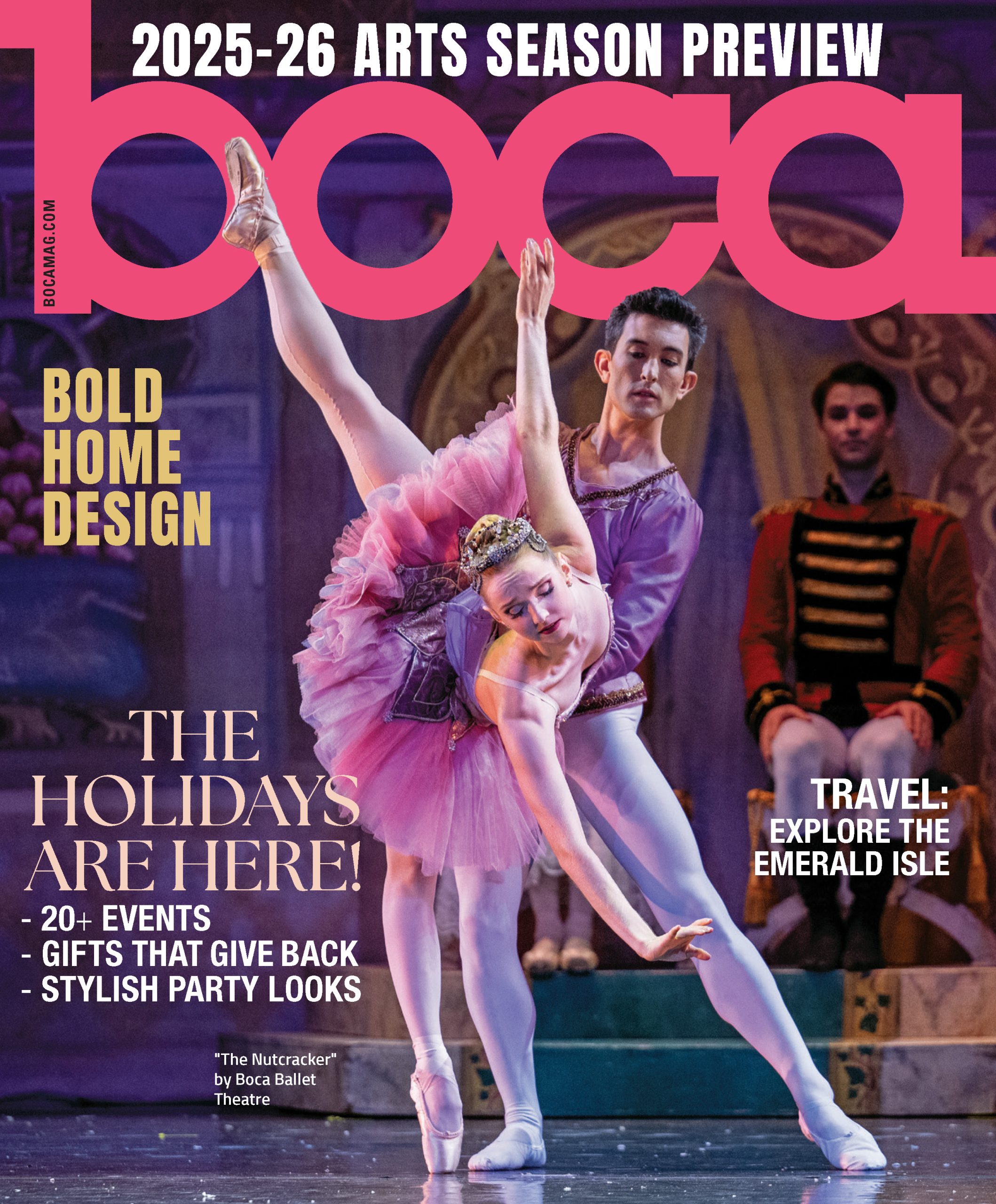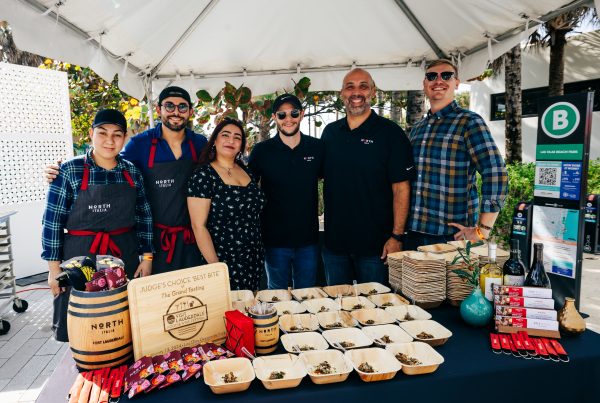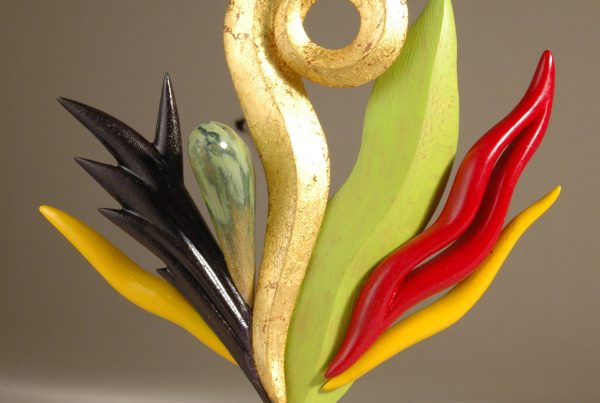Consisting of four standalone exhibitions creatively gathered under a thematic umbrella, NSU Art Museum’s sprawling “Picturing Fame” is an insightful and multifaceted ramble into the relationship between celebrity and art—and how these forces have shaped each other over more than a century.
We tend to think of these terms in opposition: “Celebrity” is hollow, the marketplace of lowest-common-denominator entertainment for the masses; “art” is hallowed, the domain of a cerebral, niche cognoscenti. But, whether it’s the rich and famous angling, and sometimes catching, artistic acceptance, or artists captivated by the allure of celebrity, they’ve long made for mutually beneficial bedfellows. “Picturing Fame” revels in this tenuous blurring of distinctions.
The series begins as it should, with “Toulouse-Lautrec and the Follies of Fame” exhibiting the title artist’s influential posters depicting the spirited performers of Paris’ fin-de- siècle demi-monde. This leads right into a direct connection across time: “Emilio Martinez: Van Gogh, Lautrec and Me,” in which the contemporary collagist Martinez, in his first-ever solo exhibition, incorporates work from these 19th century masters into his own fantastical imagery. Next in line is “The Swans: Artwork by Karen Kilimnik & Dresses from Stephanie Seymour”—its own multipronged show within a show, marrying Kilimnik’s vivid paintings of reimagined movie stars and fashion models with Seymour’s vintage dresses designed by heavyweights of hatue couture and worn by the entertainment glitterati. “Picturing Fame” culminates with “Hooray For Hollywood,” another multi-artist exhibition that lifts the celebrity/artist dichotomy into present day. I could spend this entire review on just one of the four exhibitions, each offering plenty to unpack; there are even cameos from Frida Kahlo and Andy Warhol.

Emilio Martinez, a self-taught, Honduran-born, Miami-residing artist, is a talent to watch. His disarming collages employ cut-up visuals from books about Vincent Van Gogh to form monsters from his childhood id, the late artist’s bristling whorls of paint repurposed into the midsections, arms of legs of primitive fantastic beasts. Some of the works include text from the books and self-portraits of Van Gogh, to whom Martinez has added spiky black hair, like doodles in a middle schooler’s yearbook—underlining the postmodern idea that no one is sacred, not even one’s idols. Yet Martinez’s monsters, which he also superimposed onto Toulouse-Lautrec posters, and forging a cross-generational connection, are not threatening but absurd, their dandyish footwear and out-of-proportion bodies endearing us to their whimsy.
But I’d like to focus the most on the bookends of “Picturing Fame,” and their full-circle nature. For an artist as globally and historically important as Henri de Toulouse-Lautrec, his work is seldom shown in contemporary museums, and it’s more than a treat to experience a curated sample of his drawings, etchings and posters. Capturing the vibrant nightlife of Belle Époque Paris, which at its zenith offered some 350 performances a night, Toulouse-Lautrec brought fine art into the gutter and vice versa, elevating even talent-starved entertainers, like the dirty dancer May Milton, into bona fide celebrities.

Refining a distinct vision between naturalism and caricature, he emphasized the physical eccentricities of his subjects—their girth, their slenderness, their uncompromised faces—along with a kinetic appreciation for motion. The posters twitch with vitality and surprise us with details: If you’re like me, you missed the serpent slithering on the dress of performer Jane Avril at first glance. Select contributions from a couple of Toulouse-Lautrec’s artistic contemporaries only reinforce the distinction of his vision.
The ironically titled “Hooray for Hollywood” concludes “Picturing Fame” with a 21st century update to Toulouse-Lautrec’s bailiwick: the dual sense of immersion and distance, fascination and aversion, that conjoins artist and celebrity. Elizabeth Taylor was still alive when artist Catherine Opie was permitted to photograph the personal effects of her Bel Air estate, but Opie’s famous sequence of images from this period, circa 2010, still has a voyeuristic aftertaste. Presented in the context of “Picturing Fame,” Opie’s “700 Nimes Road” has the feeling of a postmortem examination—and an acknowledgment that privacy is no longer a luxury for the privileged.

This reality is underscored by the final works in “Hooray for Hollywood,” a suite of paintings by Enoc Perez that recast paparazzi photos as reverential art. Whether it’s John F. Kennedy Jr. and his wife Caroline avoiding the camera’s glare as they enter their limousine or Frank Sinatra glumly donning a mask with wife Mia Farrow at one of Truman Capote’s Black and White Parties, Perez’s rigorous labor in re-creating some fame monger’s bankable snapshot into a painting is itself the point: Distinctions between art, celebrity and commerce are more nebulous than ever. To attempt to disentangle them is a losing battle, and besides: With works as thoughtful and evocative as those in “Picturing Fame,” who would want to?
The exhibitions in “Picturing Fame” run through Oct. 1 at NSU Art Museum, 1 E. Las Olas Blvd., Fort Lauderdale. For information, call 954/525-5500 or visit nsuartmuseum.org.
For more of Boca magazine’s arts and entertainment coverage, click here.







